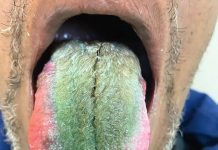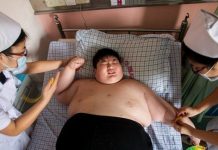 UNIVERSITY OF ROCHESTER MEDICAL CENTER
UNIVERSITY OF ROCHESTER MEDICAL CENTER
University of Rochester Medical Center pharmacists compound drugs in different strengths and dosages to fit patients’ needs.
Drug compounding operations continue to grow across the country, and many are looking to robotics to sustain their expansions. An aging U.S. population and the demand for customized medicine will propel an estimated 6% growth rate in compounding pharmacies through 2026, according to a recent report from Graphical Research. Compounding pharmacies are turning to automation, both for workflow and labor, to fuel long-term growth. “The technology hasn’t reached adulthood yet. There are some issues with fully automated robotics not generating enough throughput. But the new generation of robots is coming soon that will dramatically increase throughput,” said David Webster, director of acute care pharmacy operations at University of Rochester Medical Center in New York. In the meantime, University of Rochester Medicine has been using automation to prepackage medications and syringes rather than formulating them at the bedside. The seven-hospital, not-for-profit system implemented an integrated bar code system as a quality-assurance mechanism that provides an additional check that compounded drugs are mixed correctly.
Download Modern Healthcare’s app to stay informed when industry news breaks. UR Medicine, like other U.S. health systems, aims to ease pharmacists’ workloads as the company struggles to recruit and retain technicians. Many workers are opting for similar-paying jobs that are less rigorous. Compounding pharmacies are backfilling those jobs with more highly skilled workers, which is an expensive but necessary stopgap. But over the long term, executives hope to supplement their workforces with robots that can mitigate staffing problems. “There will continue to be a shortage unless we pay more as an industry or look to robotics to shore up staffing concerns,” said Majid Tanas, chief pharmacy officer at Legacy Health, a six-hospital chain based in Portland, Oregon. “At some point in the future, I could see us centralizing our 503A compounding facilities by leveraging technology and robotics.”
In addition to automation, executives expect scale to streamline operations. Private equity firm Osceola Capital recently acquired Everwell Specialty Pharmacy to form Revelation Pharma Corp. Revelation Pharma aims to acquire and grow a national partnership of 503A compounding pharmacies, which mix small batches of customized drugs for specific patients. 503B facilities, which many health systems say are cost-prohibitive, outsource large batches of compounded drugs and are regulated by the Food and Drug Administration rather than guided by U.S. Pharmacopeia standards. The 503A pharmacy compounding sector historically has been fragmented, said Jacob Beckel, an industry veteran who is partnering with Revelation Pharma to build partnerships among 503A compounders. Consolidation will help balance rising compliance costs, he said. Revelation Pharma plans to focus on hormone-replacement therapy drugs, integrative medicine, anti-infectives, analgesics and veterinary products. “We look to keep compounding pharmacy’s local presence and the goodwill they’ve developed in the market and take certain administrative tasks like compliance, (information technology) and (human resources) off their plate,” Beckel said. Revelation Pharma plans to have 60 to 70 locations in 30 states over the next five years, Beckel said. “With that, we can go to the providers—ambulatory surgery centers, dental systems—or right to the insurance companies that need more hand-holding and more efficient compliance strategies,” he added. “That’s where we expect to morph into services local communities need under a more standardized system.” Compounders helped mitigate drug shortages during the COVID-19 pandemic for medicines including analgesics and sedatives used for ventilated patients and infusion drugs and pain relievers for intensive-care patients. Sanford Health used clean rooms in its compounding pharmacies to make its own COVID-19 test kits last year, said Jesse Breidenbach, senior executive director of pharmacy at the Sioux Falls, South Dakota-based 46-hospital not-for-profit system. When swabs and testing media were in short supply, the provider used its pharmacies’ sterile preparation areas to fill test tube vials with saline and package them with testing supplies.
By the numbers The U.S. hospital-based compounding pharmacy market was valued at $3 BILLION in 2019 and is expected to grow 6% annually through 2026. Compounding pharmacies accounted for 39% of the revenue generated from personalized drug sales in the U.S. in 2019. The prevalence of chronic diseases is expected to boost demand for personalized medications. The number of Americans age 65 or older will nearly double to reach 95 MILLION by 2060, compared with around 52 million in 2018. Compounding pharmacies could also help mitigate drug shortages.
Source: Compounding Pharmacies Market: Top 5 trends boosting the global industry demand through 2026 by Graphical Research.
Looking ahead, Sanford pharmacy leaders recently evaluated four robots that compound intravenous drugs, Breidenbach said. “We are looking for something that is easy to maintain and doesn’t require someone to babysit it,” he said. Compounding pharmacies’ expertise was particularly helpful over the last 18 months, especially given the limitations of retail drugstores Beckel said. Some of the chain pharmacies are notorious for crushing tablets, adding them to water and calling them suspensions even though they yield inconsistent doses, he said. The quality and customization that compounders produce will have staying power, Beckel said. “Compounding is not going away,” he said.
Source link : https://www.modernhealthcare.com/technology/health-systems-aim-grow-compounding-pharmacies











